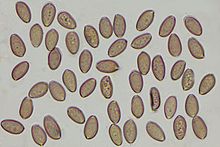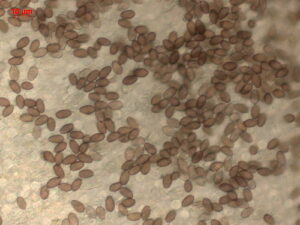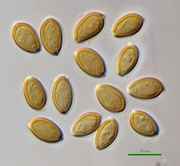Home / Shop
Psilocybe Cyanescens (Wavy Cap) Spore Swabs








- Description
From wikipedia copy pasta, mainly referencing Stamets and Guzman works.
Can be found in craaaazy amounts when given the right conditions! Twas reported that over 100,000 individual mushies popped up at a race track in London. Could you imagine that field?!?!
Appearance
Psilocybe cyanescens has a hygrophanous pileus (cap) that is caramel to chestnut-brown when moist, fading to pale buff or slightly yellowish when dried. Caps generally measure from 1.5–5 cm (½" to 2") across, and are normally distinctly wavy in maturity. The color of the pileus is rarely seen in mushrooms outside of the P. cyanescens species complex. Most parts of the mushroom, including the cap and Lamellae (gills, underneath the cap) can stain blue when touched or otherwise disturbed, probably due to the oxidation of psilocin. The lamellae are adnate, and light brown to dark purple brown in maturity, with lighter gill edges. There is no distinct annulus, but immature P. cyanescens specimens do have a cobwebby veil which may leave an annular zone in maturity. Both the odor and taste are farinaceous.
P. cyanescens has elliptical spores which measure 9–12 x 5–8 μm. According to some authors, the holotype collection of the species from Kew Gardens featured no pleurocystidia, but North American collections are characterized by common clavate-mucronate pleurocystidia. However, pleurocystidia are present in the holotype collection (but not easily to observe since hymenium is collapsed). In European collections of P. cyanescens, pleurocystidia are common and their shape is identical to those known from the United States. In 2012, an epitype from Hamburg, Germany was designated.
Fresh sporocarps and mycelia of P. cyanescens generally bruise blueish or blue-green where damaged, and the staining remains visible after drying. This staining is most noticeable on the stem (which is white when undisturbed) but can also occur on other parts of the mushroom, including the gills, cap, and mycelium. This staining is due primarily to the oxidation of psilocin. (Psilocybin cannot be oxidized directly, but is quickly converted via enzymatic action to psilocin at injury sites which can then be oxidized, so even specimens with little psilocin still generally stain blue.)